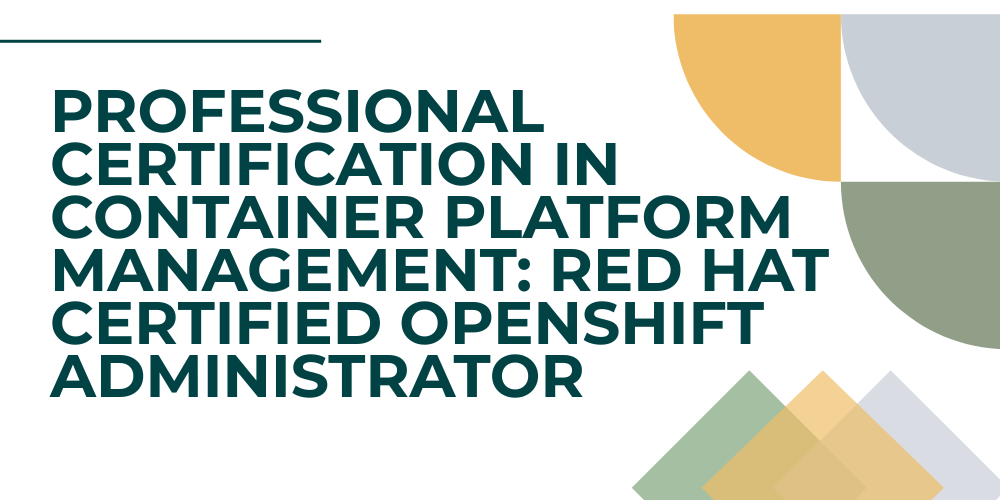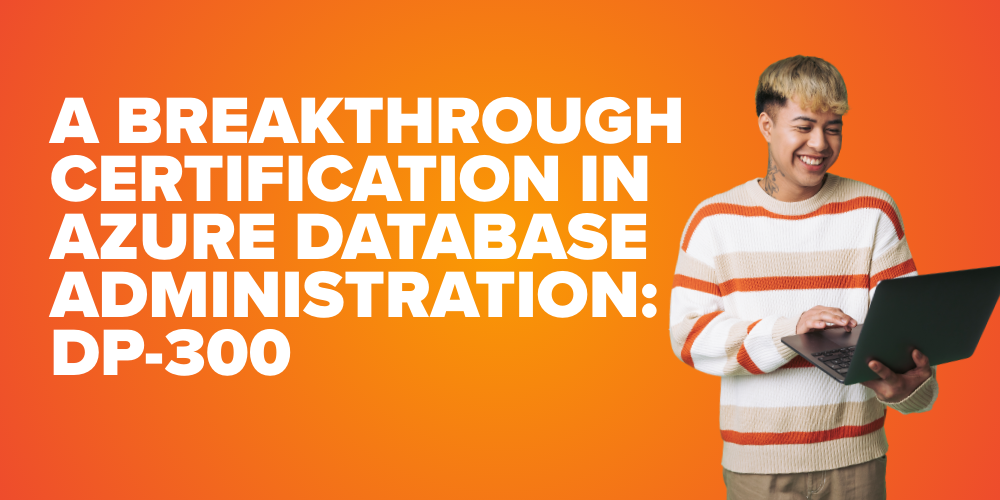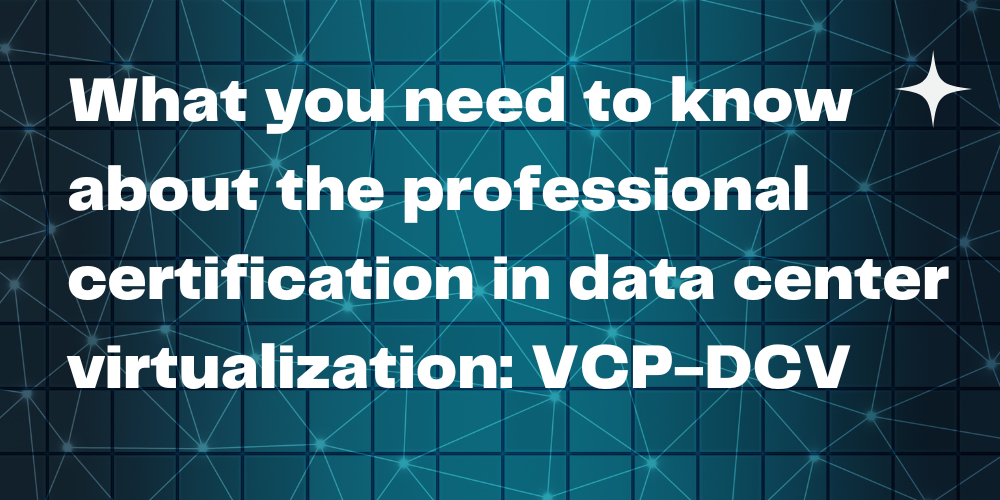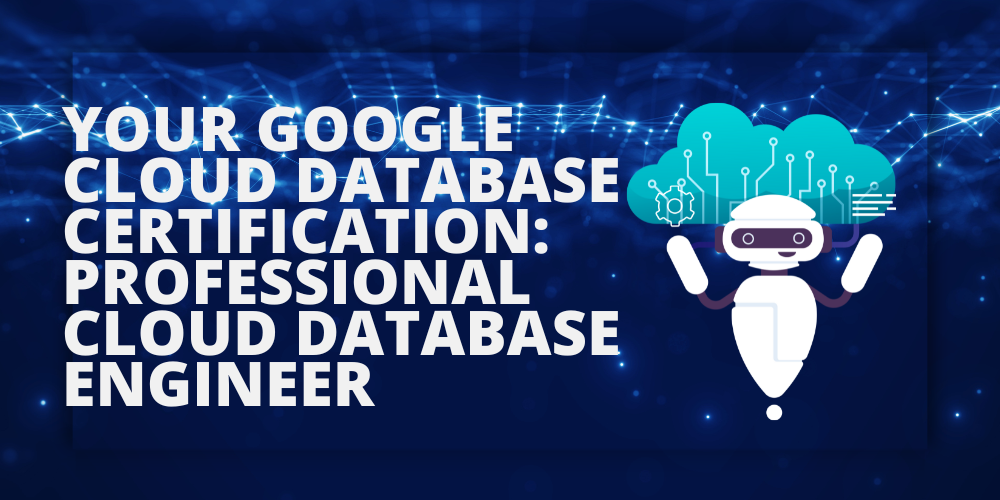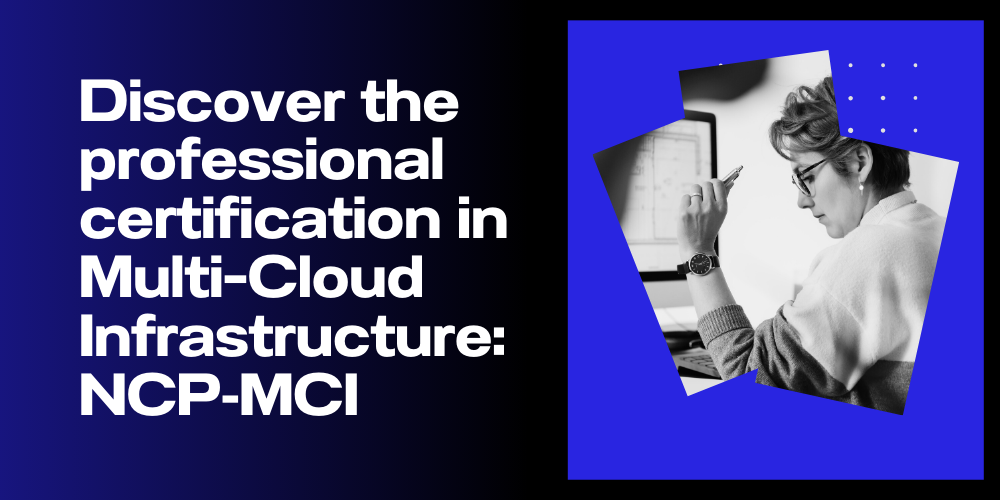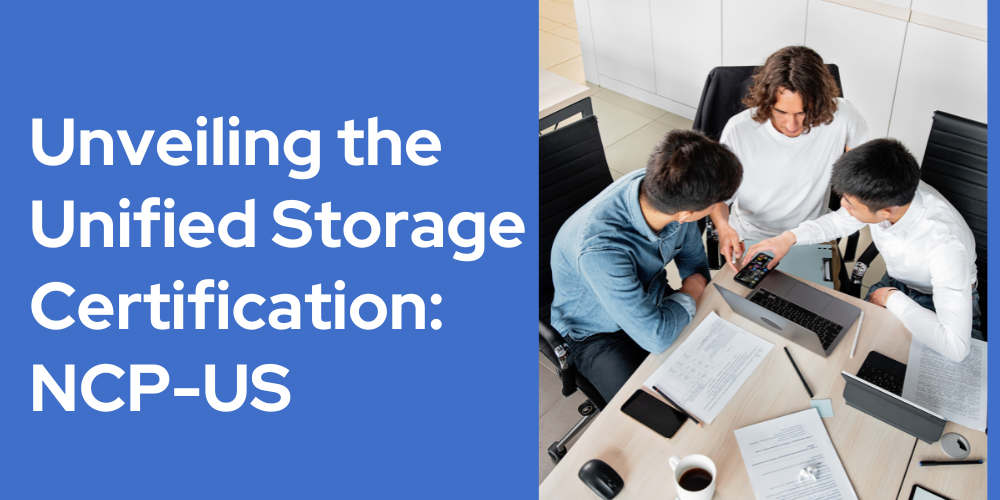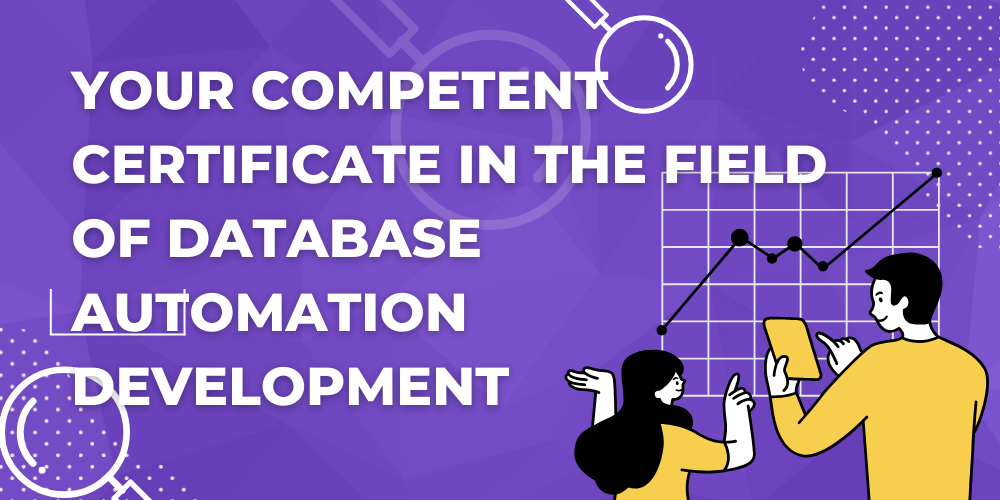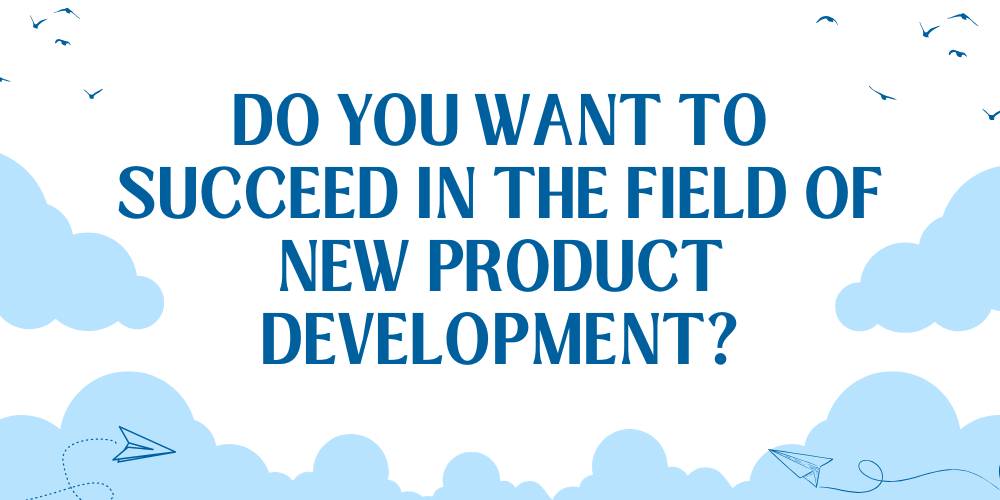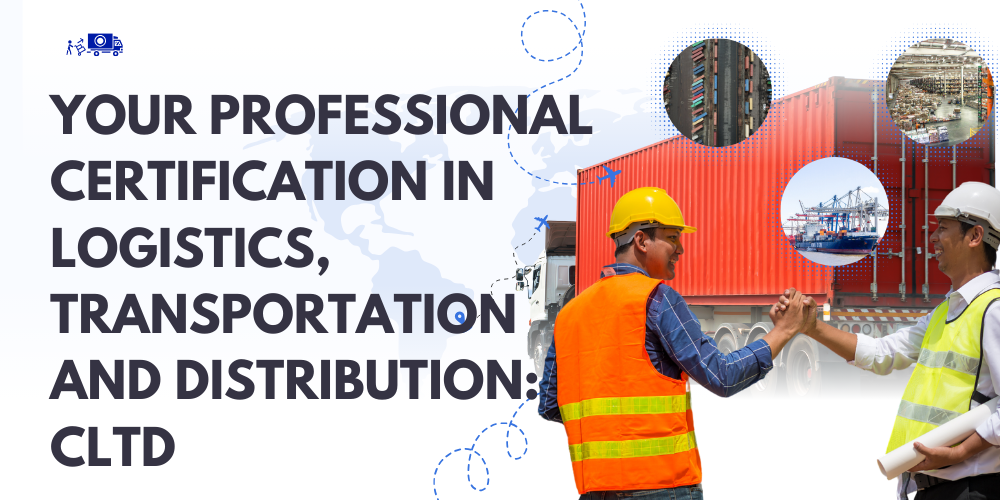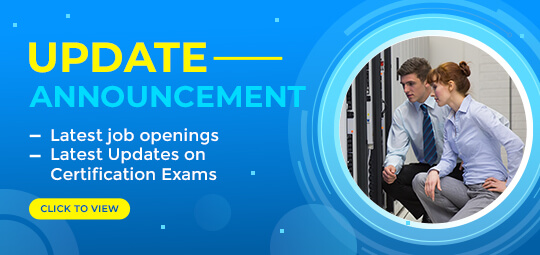TRUSTED BY THE SMARTEST TEAMS IN THE WORLD FOR CERTIFIED CANDIDATES
SPOTO Blogs
Useful learning materials to become certified IT personnel
-
- 525
- SPOTO 2
- 2025-09-28 15:17
-
- 632
- SPOTO 2
- 2025-09-28 14:55
-
- 746
- SPOTO 2
- 2025-09-26 11:36
-
- 672
- SPOTO 2
- 2025-09-26 11:31
-
- 603
- SPOTO 2
- 2025-09-25 15:07
-
- 609
- SPOTO 2
- 2025-09-25 15:03
-
- 586
- SPOTO 2
- 2025-09-24 11:43
-
- 554
- SPOTO 2
- 2025-09-24 11:39
-
- 734
- SPOTO 2
- 2025-09-23 11:59
TRUSTED BY THE SMARTEST TEAMS IN THE WORLD FOR CERTIFIED CANDIDATES
SPOTO Blogs
Useful learning materials to become certified IT personnel
-
- 525
- SPOTO 2
- 2025-09-28 15:17
Table of Contents1. Introduction to the Red Hat Certified OpenShift Administrator certification2. The Competitive Edge of a Red Hat Certified OpenShift Administrator Certification3. Core Components of the Red Hat Certified OpenShift Administrator Certification4. What are the requirements to be a Red Hat Certified OpenShift Administrator?5. Comparable Certifications to Red Hat Certified OpenShift Administrator Certification Red Hat Certified OpenShift Administrator is a highly valuable certification dedicated to enhancing practitioners' expertise in the Red Hat OpenShift container platform. 1. Introduction to the Red Hat Certified OpenShift Administrator certification The Red Hat Certified OpenShift Administrator isn't just another certification—it's a hands-on validation of your ability to run and manage the Red Hat OpenShift platform with confidence. Offered by Red Hat, this certification confirms that you have what it takes to deploy, configure, and maintain containerized applications efficiently using OpenShift. It's built for those who don't just follow steps but truly understand how to keep container environments highly available, performant, and secure. When you earn this certification, you're proving you can handle the full lifecycle of container-based applications—from resource provisioning and network setup to storage management—all aligned with real business needs. These professionals act like the “operations leads” for a company's container environment. They get what different applications require from the platform, and they use OpenShift's powerful toolset to tackle real-world challenges: rapid app updates, scaling container clusters, and maintaining multi-tenant resource isolation. Ultimately, the Red Hat OpenShift Administrator certification helps you give businesses the flexibility and stability they need to grow—through smarter, more reliable container management. 2. The Competitive Edge of a Red Hat Certified OpenShift Administrator Certification As a globally renowned open source solutions provider, Red Hat's Certified OpenShift Administrator certification is highly respected and recognized in the field of container platform management. Earning this certification demonstrates that you have undergone professional assessment and possessed standardized Red Hat OpenShift Container Platform knowledge and skills, making you more attractive to employers when applying for positions across all aspects and levels of the Red Hat OpenShift Container Platform. The Certified OpenShift Administrator certification focuses on the key areas of the Red Hat OpenShift Container Platform and is a valuable stepping stone for transitioning from traditional operations and system administration roles to higher-level roles in container platform management. Earning the Red Hat Certified OpenShift Administrator certification broadens your career path and often significantly increases your salary. The process of preparing for and obtaining the certification encourages you to systematically and comprehensively acquire knowledge and skills related to the Red Hat OpenShift Container Platform, delving deeper into fundamental concepts and specific aspects. This builds a solid foundation for further research and practical application of the Red Hat OpenShift Container Platform, facilitating your future career development. Container technology and the related cloud platform landscape are constantly evolving, with new container orchestration features, network configuration methods, and security mechanisms emerging constantly. While the Red Hat Certified OpenShift Administrator certification is valid for three years, this doesn't mean you can stop learning. On the contrary, to stay current, you need to continuously monitor industry trends, acquire new knowledge and skills, and master cutting-edge practical cases like serverless container applications and intelligent container management. 3. Core Components of the Red Hat Certified OpenShift Administrator Certification Red Hat's Certified OpenShift Administrator certification program builds a comprehensive knowledge base for managing containerized applications throughout their lifecycle on the Red Hat OpenShift platform, covering core skills from cluster architecture and application deployment to secure operations and maintenance, as well as integration and expansion. Through this training, you'll gain a deep understanding of the Master/Worker node architecture and the functions of core components such as etcd and the API Server. You'll master template- and command-line-based application deployment methods, implement comprehensive application lifecycle management, master resource quota allocation and optimization strategies, and achieve efficient resource utilization through monitoring tools. You'll gradually become familiar with SDN network architecture, master network policy configuration and access control rule settings, and master the configuration of storage types such as persistent storage volumes and data lifecycle management. You'll also learn security and authentication and authorization, mastering the configuration of security mechanisms. 4. What are the requirements to be a Red Hat Certified OpenShift Administrator? (1) Qualification prerequisites: Red Hat recommends that you have some experience in container technology, Linux system administration, and operations, generally requiring at least one to two years of relevant work experience. There's no strict educational requirement for the certification, but having a college degree or higher will be beneficial for exam preparation. (2) Training and examinations: The Red Hat Certified OpenShift Administrator exam typically lasts approximately 120 minutes and consists of a combination of single-choice, multiple-choice, and practical questions. It tests your understanding, application, and analytical skills across various aspects of the Red Hat OpenShift container platform, assessing your professional proficiency. The number of questions varies depending on the specific exam schedule. According to Red Hat's official standards, you must achieve a certain score percentage to pass the exam. The score may vary slightly depending on factors such as exam batches; please refer to the official official release for details. The exam fee is approximately US$400, with fees varying slightly by region. (3) Qualification maintenance: The Red Hat Certified OpenShift Administrator certificate is generally valid for three years and to maintain the certificate's validity, you must accumulate a certain number of credits through Red Hat-approved continuing education activities during the validity period. 5. Comparable Certifications to Red Hat Certified OpenShift Administrator Certification Certified Kubernetes Administrator (CKA) Certified Kubernetes Security Specialist (CKS) Google Cloud Certified – Kubernetes Engine Specialist Microsoft Certified: Azure Kubernetes Service Administrator Associate -
- 632
- SPOTO 2
- 2025-09-28 14:55
Table of Contents1. Introduction to the Microsoft Certified: Azure Database Administrator Associate certification2. The Rewards of Being a Microsoft Certified: Azure Database Administrator Associate 3. Core Components of the DP-300 Certification4. What are the requirements to be a Microsoft Certified: Azure Database Administrator Associate?5. Comparable Certifications to Microsoft Certified: Azure Database Administrator Associate Certification Microsoft Certified: Azure Database Administrator Associate is a professional certification dedicated to improving practitioners' Azure database management capabilities. 1. Introduction to the Microsoft Certified: Azure Database Administrator Associate certification The Microsoft Certified: Azure Database Administrator Associate (DP-300) is a Microsoft-proven professional certification focused on database administration on the Azure cloud platform. It aims to provide in-depth expertise, skills, and best practices for database administration in the Azure environment, enabling efficient configuration, management in this field. Azure, a powerful cloud computing platform provided by Microsoft, hosts critical business data for many enterprises. The core of the DP-300 certification is to cultivate and certify professionals who are proficient in using Azure cloud services to manage a wide range of databases, including Azure SQL Database, Azure Cosmos DB, and Azure Synapse Analytics. This includes database deployment, configuration, performance optimization, security assurance, and ongoing operations. These professionals are like the "guardians" of the enterprise Azure database environment. They can deeply understand the different needs of enterprise businesses for databases. Based on business characteristics and development plans, they can effectively respond to various challenges such as massive data storage, high-concurrency reading and writing, data consistency assurance, and strict security and compliance requirements by utilizing the rich functions and tools provided by Azure. They can improve the availability, reliability and overall operational efficiency of the Azure database, thereby helping enterprises to fully tap the value of data and ensure the stable and efficient operation of core businesses on the Azure cloud platform. 2. The Rewards of Being a Microsoft Certified: Azure Database Administrator Associate As a globally renowned technology company, Microsoft's Azure cloud platform holds a significant position in the cloud computing market. The Microsoft Certified: Azure Database Administrator Associate (DP-300) certification is highly respected and prestigious in the field of Azure database administration. Obtaining this certification demonstrates that you have undergone professional assessment and possess standard Azure database knowledge and skills, making you more attractive to employers when applying for positions across all aspects and levels of Azure database management. The DP-300 certification focuses on the key area of Azure database management and is a valuable stepping stone for transitioning from traditional database management and cloud platform operations to senior-level Azure database positions. Earning the DP-300 certification broadens your career development path and often significantly increases your salary. The process of preparing for and obtaining the certification encourages you to systematically and comprehensively acquire knowledge and skills in the Azure database field, from fundamental concepts to detailed understanding. This builds a solid foundation for further research and practical application of Azure database management, facilitating your future career development. Azure database technologies and concepts are evolving rapidly, with emerging trends like the integration of AI and databases and serverless databases. While the Microsoft Certified: Azure Database Administrator Associate (DP-300) certification is valid for two years, this doesn't mean you can stop learning. To stay current, you need to continuously monitor industry trends, acquire new knowledge and skills. This ensures your expertise remains relevant to the evolving Azure database landscape, maintaining a competitive edge in your career development. 3. Core Components of the DP-300 Certification The DP-300 certification system builds a comprehensive knowledge base for managing databases throughout their lifecycle on the Microsoft Azure platform, comprehensively covering core skills from service deployment and performance optimization to secure operations and technological innovation. Through this training, you'll gradually master the features and applicable scenarios of core services such as SQL Database, Cosmos DB, and Synapse Analytics, become familiar with the deployment processes of various database services, and master parameter configuration and version control methods. Secondly, you'll use tools such as Azure Monitor to conduct performance diagnostics, optimize query statements and resource allocation, master security mechanisms such as data encryption and access control, meet compliance requirements such as GDPR and HIPAA, and master cross-platform data migration and system integration using tools such as Azure Data Factory. Finally, you'll configure geo-redundancy and automatic failover, develop a comprehensive disaster recovery plan, implement operational automation such as automatic resource scaling, master troubleshooting and troubleshooting, and gain an understanding of the application of cutting-edge technologies such as AI-assisted management and serverless databases on the Azure platform. 4. What are the requirements to be a Microsoft Certified: Azure Database Administrator Associate? (1) Qualification prerequisites: Microsoft generally recommends that you have some experience in database administration and operations. Because the certification involves in-depth and complex database knowledge and skills on the Azure cloud platform, at least one to two years of relevant work experience is generally required. Practical work experience helps you better prepare for the exam and apply what you've learned in real-world situations. While there are no strict educational requirements, having a college degree or higher will be beneficial for exam preparation, and a relevant professional background is even better. This will help you more easily understand Azure database concepts and principles and more quickly grasp key points during the learning process. (2) Training and examinations: The DP-300 exam typically lasts approximately 120 minutes and consists of a variety of questions, including single-choice, multiple-choice, and practical exercises. It tests your understanding, application, and analytical skills across various aspects of Azure Database, assessing your professional proficiency. The number of questions varies depending on the specific exam schedule. According to Microsoft's official standards, you must achieve a certain score percentage to pass the exam. The fee may vary slightly by region, but is generally around US$165. (3) Qualification maintenance: The DP-300 certificate is generally valid for 2 years and to maintain the validity of the certificate, you need to accumulate a certain number of credits by participating in Microsoft-approved continuing education activities during the validity period. 5. Comparable Certifications to Microsoft Certified: Azure Database Administrator Associate Certification Oracle Certified Professional, MySQL Database Administrator Oracle Certified Associate/Database Administrator AWS Certified Database – Specialty Google Professional Cloud Database Engineer -
- 746
- SPOTO 2
- 2025-09-26 11:36
Table of Contents1. Introduction to the VCP DCV certification2. Why Earn Your VCP DCV Certification?3. Core Components of the VCP DCV Certification4. What are the requirements to be a VMware Certified Professional - Data Center Virtualization?5. Comparable Certifications to VMware Certified Professional - Data Center Virtualization Certification This article introduces VCP-DCV, a professional certification designed to improve practitioners' proficiency in data center virtualization on the VMware vSphere platform. 1. Introduction to the VCP DCV certification The VMware Certified Professional - Data Center Virtualization (VCP‑DCV) is a professional certification offered by VMware. It aims to provide you with in-depth expertise, skills, and best practices for data center virtualization operations using VMware vSphere and other related technologies. This allows you to more effectively build, manage, and maintain data centers in enterprise-level scenarios, enhancing your professional and practical skills in this field. In today's enterprise digital transformation, data center virtualization has become a key initiative for optimizing resource utilization, increasing flexibility, and reducing costs. The core of the VCP‑DCV certification is to cultivate and certify professionals who are proficient in using the VMware vSphere virtualization platform to configure, manage, and optimize virtualized data center computing, storage, and networking resources. These professionals are like the "behind-the-scenes controllers" of the enterprise data center. They can deeply understand the business needs of the enterprise for data center resources. Based on the business characteristics and development plans, they can effectively deal with various challenges such as uneven resource allocation, system performance bottlenecks, and business continuity assurance by utilizing the powerful functions and tools provided by VMware, thereby improving the resource utilization, reliability and overall operational efficiency of the data center, thereby helping enterprises respond to market changes more flexibly and ensuring the stable and efficient operation of core businesses in a virtualized environment. 2. Why Earn Your VCP DCV Certification? As a leading global virtualization technology provider, VMware's VMware Certified Professional - Data Center Virtualization (VCP‑DCV) certification is highly respected and recognized in the data center virtualization field. Earning this certification demonstrates that you have undergone professional assessment and possessed standardized knowledge and skills in VMware vSphere platform data center virtualization. This makes you more attractive to employers when applying for positions across all aspects and levels of data center virtualization. The VCP‑DCV certification focuses on the key area of VMware vSphere platform data center virtualization, providing a valuable stepping stone for transitioning from traditional data center management. Earning the VCP‑DCV certification broadens your career path and often results in a significant salary increase. The process of preparing for and obtaining the certification encourages you to systematically and comprehensively acquire knowledge and skills in VMware vSphere platform data center virtualization, delving into fundamental concepts and specific aspects. Virtualization technology and related data center fields are constantly evolving, with new virtualization architectures, resource management methods, and security mechanisms emerging constantly. This ensures your professional capabilities remain relevant to the ever-changing landscape of data center virtualization, maintaining a competitive edge in your career development. 3. Core Components of the VCP DCV Certification The VCP-DCV certification system builds a comprehensive knowledge base on data center virtualization based on the VMware vSphere platform, comprehensively covering core skills from architecture design and resource management to high availability and secure operations. Through this program, you will gain a deep understanding of core virtualization concepts and their critical value to resource optimization and business continuity. Secondly, you will gradually master storage configuration methods such as vSAN, implement storage performance monitoring and data protection strategies, master distributed virtual switch configuration, ensure network performance optimization and security policy implementation, familiarize yourself with resource allocation strategies. Finally, you will master high-availability technologies such as HA/FT, ensure business continuity, establish a comprehensive monitoring system, implement resource and configuration optimization strategies, become proficient in security mechanism configuration, and implement refined permission management and compliance auditing. 4. What are the requirements to be a VMware Certified Professional - Data Center Virtualization? (1) Qualification prerequisites: VMware generally recommends that you have some experience in data center management and virtualization, generally requiring at least six months to one year of relevant work experience. While there are no strict educational requirements, a college degree or higher will be beneficial for exam preparation, especially if you have a background in computer science and technology, information management, or network engineering. Having a solid foundation in basic theoretical knowledge will make it easier to understand the concepts and principles of data center virtualization and help you grasp the key points more quickly during the learning process. (2) Training and examinations: The VCP-DCV exam typically lasts approximately 120 minutes and consists of a variety of questions, including single-choice, multiple-choice, and practical exercises. It assesses candidates' understanding, application, and analytical skills in all aspects of data center virtualization within the VMware vSphere platform, verifying their professional proficiency. The number of questions varies depending on the specific exam schedule. According to VMware's official standards, you must achieve a certain score percentage to pass the exam. These scores may vary slightly based on factors such as exam batches; please refer to the official official release for details.The exam fee is approximately US$250, with slight variations in fees depending on the region. (3) Qualification maintenance: The VCP-DCV certification is generally valid for two years and to maintain its validity, you must accumulate a certain number of credits through VMware-approved continuing education activities during this period. 5. Comparable Certifications to VMware Certified Professional - Data Center Virtualization Certification Nutanix Certified Professional‑Multicloud Infrastructure (NCP‑MCI) Red Hat Certified Engineer (RHCE) - Virtualization Microsoft Certified: Azure Virtualization Solutions Associate Citrix Certified Professional - Virtualization (CCP‑V) -
- 672
- SPOTO 2
- 2025-09-26 11:31
Table of Contents1. Introduction to the Google Professional Cloud Database Engineer certification2. The Rewards of Being a Google Professional Cloud Database Engineer3. Overview of the Google Professional Cloud Database Engineer Certification4. What are the requirements to be a Google Professional Cloud Database Engineer?5. Comparable Certifications to Google Professional Cloud Database Engineer Certification Google Professional Cloud Database Engineer is a valuable professional certification in the field dedicated to improving practitioners' Google Cloud Database expertise. 1. Introduction to the Google Professional Cloud Database Engineer certification The Google Professional Cloud Database Engineer certification, launched by Google Cloud, validates your expertise in designing, building, managing, and operating database systems on the Google Cloud Platform. In today's booming digital business era, data, as a core asset, relies on powerful and adaptable database systems for storage, management, and efficient utilization. The Google Professional Cloud Database Engineer certification aims to cultivate and certify professionals who are proficient in Google Cloud database services and can strategically plan and precisely deploy database architectures based on enterprise strategy and business needs, ensuring high availability, performance, and security, while also handling complex tasks such as data migration and expansion. These professionals are the "helmsmen" of enterprise data management. They deeply understand the diverse database requirements of different business lines. Leveraging the advanced database features and tools provided by Google Cloud Platform, they effectively address challenges such as massive data storage, high-concurrency reads and writes, and ensuring data consistency, helping enterprises fully tap into the value of their data and drive sustainable and stable business growth. 2. The Rewards of Being a Google Professional Cloud Database Engineer As a globally renowned cloud computing service provider, Google Cloud's Google Professional Cloud Database Engineer certification is highly respected and recognized within the Google Cloud Database field. This makes you more attractive to employers when applying for positions across all levels of Google Cloud Database. The Google Professional Cloud Database Engineer certification focuses on the key area of Google Cloud Database, providing a valuable stepping stone for transitioning from traditional database management and cloud platform operations roles to senior-level positions within Google Cloud Database. Earning the Google Professional Cloud Database Engineer certification broadens your career path and often significantly increases your salary. The preparation and certification process encourages you to systematically and comprehensively acquire knowledge and skills in the Google Cloud Database field, delving deeper into fundamental concepts and specific aspects. This builds a solid foundation for further research and practical application within Google Cloud Database, facilitating future career development. Technology and concepts in the Google Cloud Database field are rapidly evolving, with emerging trends such as the integration of AI and databases and serverless databases. The Google Professional Cloud Database Engineer certification is valid for two years, but that doesn't mean you can stop learning. To stay current, you need to continuously monitor industry trends, acquire new knowledge and skills, and master cutting-edge practical cases like leveraging machine learning for intelligent database operations and the practical application of serverless database architectures. This ensures your expertise remains relevant to the ever-changing landscape of Google Cloud Database, ensuring you maintain a competitive edge in your career development. 3. Overview of the Google Professional Cloud Database Engineer Certification The Google Professional Cloud Database Engineer certification system builds a comprehensive knowledge base for Google Cloud database services, comprehensively covering core skills from architecture design and deployment configuration to operations optimization and innovative applications. It is suitable for both current and new professionals pursuing careers in cloud database architects, database administrators, data engineers, and related technical positions. Through this program, you will gain a deep understanding of the features and applicable scenarios of services such as Cloud SQL, Firestore, Bigtable, and BigQuery. You will become familiar with the deployment processes of various database services, and master parameter configuration and version control techniques. Secondly, you will monitor key metrics using tools like Stackdriver, implement optimization strategies for queries and resource allocation, master the configuration of security mechanisms. Finally, you will develop a backup plan based on RPO/RTO, master the automated recovery process, master multi-region deployment and failover configuration, have the ability to develop and rehearse disaster recovery plans, be familiar with operation and maintenance operations such as automatic resource expansion and reduction, master common fault diagnosis methods, understand trends such as AI-assisted management and Serverless databases, and promote innovation in intelligent data management. 4. What are the requirements to be a Google Professional Cloud Database Engineer? (1) Qualification prerequisites: Google generally recommends that you have some experience in database management and operations. This practical experience helps you better understand and master these topics, integrating theoretical knowledge with practical application, and better prepare for exams and apply your knowledge in real-world situations. The Google Professional Cloud Database Engineer certification requires in-depth and complex database knowledge and skills on the Google Cloud Platform and generally requires at least three years of relevant work experience. While there are no strict educational requirements, having an associate degree or higher will be beneficial for exam preparation because it can help you grasp key points more quickly. (2) Training and examinations: The Google Professional Cloud Database Engineer exam typically lasts approximately 120 minutes. It tests your understanding, application, and analytical skills across various aspects of Google Cloud Database, assessing your professional proficiency. The number of questions varies depending on the specific exam schedule. According to Google Cloud's official standards, you must achieve a certain score percentage to pass the exam. The score may vary slightly depending on factors such as the exam batch. The exam fee is approximately US$200. (3) Qualification maintenance: The Google Professional Cloud Database Engineer certificate is generally valid for two years and to maintain the certificate's validity, you must accumulate a certain number of credits through Google Cloud-approved continuing education activities during the validity period. 5. Comparable Certifications to Google Professional Cloud Database Engineer Certification Google Professional Cloud Database Engineer AWS Certified Database – Specialty Microsoft Certified: Azure Database Administrator Associate (DP-300) Oracle Certified Professional, Oracle Database 19c Administrator Certified Associate -
- 603
- SPOTO 2
- 2025-09-25 15:07
Table of Contents1. Introduction to the NCP‑MCI certification2. Why Earn Your NCP‑MCI Certification?3. Core Components of the NCP‑MCI Certification4. What are the requirements to be a Nutanix Certified Professional-Multicloud Infrastructure?5. Comparable Certifications to Nutanix Certified Professional-Multicloud Infrastructure Certification Nutanix Certified Professional-Multicloud Infrastructure is a professional certification to enhance your expertise in multicloud infrastructure on the Nutanix platform. 1. Introduction to the NCP‑MCI certification The Nutanix Certified Professional - Multicloud Infrastructure (NCP-MCI) certification, launched by Nutanix, aims to provide you with in-depth expertise, skills, and best practices for managing and operating multi-cloud infrastructure in a Nutanix environment. This helps you efficiently deploy and coordinate multi-cloud resources in enterprise-level scenarios. Amidst the accelerating digital transformation and ever-expanding business, multi-cloud environments have become a popular choice for many enterprises. While they can integrate the strengths of different cloud service providers to meet diverse business needs, they also present complex management challenges. The core of the NCP-MCI certification is to cultivate and certify professionals who are proficient in the Nutanix multi-cloud infrastructure platform and can coordinate the planning, detailed configuration, efficient monitoring, and proper operation of key resources such as clusters, nodes, storage, and networks across multiple cloud environments. These professionals are like the "conductors" of an enterprise's multi-cloud architecture. They have a deep understanding of the unique needs of different business operations in a multi-cloud environment. Based on factors such as business priorities, cost considerations, and security requirements, they can effectively address various complex challenges such as cloud resource integration, cross-cloud data migration, and multi-cloud security protection by leveraging the powerful functions and tools provided by Nutanix. They can improve the overall performance, reliability, and resource utilization of the multi-cloud infrastructure, thereby helping enterprises to fully leverage the advantages of a multi-cloud strategy and ensure the stable and efficient operation of core businesses in a multi-cloud environment. 2. Why Earn Your NCP‑MCI Certification? As a leading company in the hyperconverged infrastructure and enterprise cloud sectors, Nutanix offers the NCP-MCI certification, a highly respected and reputable certification within the multi-cloud infrastructure field. Obtaining this certification demonstrates that you have been professionally assessed and demonstrated your mastery of the standardized knowledge and skills required for multi-cloud infrastructure on the Nutanix platform. This makes you highly competitive and attractive for positions at various levels within the Nutanix multi-cloud infrastructure field. The NCP-MCI certification focuses on the critical area of multi-cloud infrastructure on the Nutanix platform to senior-level multi-cloud infrastructure positions. Earning the NCP-MCI certification broadens your career path and often significantly increases your salary. The process of preparing for and obtaining the certification encourages you to systematically and comprehensively acquire knowledge and skills related to multi-cloud infrastructure on the Nutanix platform, delving deeper into fundamental concepts and specific aspects. This builds a solid foundation for further research and practical application in multi-cloud infrastructure, facilitating future career development. Cloud computing and enterprise cloud-related fields are constantly evolving, with new multi-cloud architectures, resource management technologies, and security mechanisms emerging one after another. While the NCP-MCI certification is valid for two years, this doesn't mean you can stop learning. On the contrary, to stay abreast of industry developments, certificate holders must continuously monitor industry trends, acquire new knowledge and skills, and master cutting-edge practical cases such as the application of distributed multi-cloud architectures and the development of intelligent cloud resource management. 3. Core Components of the NCP‑MCI Certification The NCP-MCI certification system builds a comprehensive knowledge base for multi-cloud infrastructure management on the Nutanix platform, comprehensively covering core skills from architecture design and resource integration to application deployment and operations assurance. It is suitable for both current and new candidates pursuing cloud architect-related technical positions. Through this training, you will gain a deep understanding of the definition and scope of multi-cloud integration management, and its critical value to enterprise resource optimization and business agility. You will also master the functionality of platform components and cross-cloud collaboration mechanisms, master integration methods with existing enterprise systems, and become familiar with cloud cluster creation and dynamic node resource allocation to achieve elastic resource scaling and performance optimization. Secondly, you will master cross-cloud storage resource integration methods, enabling data migration and sharing, performance monitoring and tuning, and cross-cloud network connectivity setup to ensure network performance optimization and transmission security. You will also be able to analyze resource usage, implement optimization strategies, and achieve refined cost control. Finally, you will become more familiar with the application deployment process in a multi-cloud environment, master performance monitoring and cross-cloud migration methods, master the configuration of platform security mechanisms, ensure compliance with data privacy and industry regulatory requirements, develop cross-cloud backup plans, be familiar with automated recovery processes to ensure business continuity, master automated operation and maintenance operations such as resource inspection and expansion, and have the ability to quickly locate and resolve common faults. 4. What are the requirements to be a Nutanix Certified Professional-Multicloud Infrastructure? (1) Qualification prerequisites: Nutanix generally recommends that you have some work experience in cloud computing, infrastructure management, and operations. Although Nutanix doesn't have strict educational requirements, having an associate's degree or higher will make it easier to understand the concepts and principles of multi-cloud infrastructure and more quickly grasp the key points during your studies. (2) Training and examinations: The NCP-MCI exam typically lasts approximately 90 minutes and consists of a variety of questions, including single-choice, multiple-choice, and practical exercises. It tests your understanding, application, and analytical skills across various aspects of the Nutanix platform's multi-cloud infrastructure. The number of questions varies depending on the specific exam schedule. According to Nutanix's official standards, you must achieve a certain score percentage to pass the exam. Please note that the exam fee is approximately US$300. (3) Qualification maintenance: The NCP MCI certificate is generally valid for two years, and to maintain the validity of the certificate, you must accumulate a certain number of credits by participating in Nutanix-approved continuing education activities during the validity period. 5. Comparable Certifications to Nutanix Certified Professional-Multicloud Infrastructure Certification VMware Certified Professional - Data Center Virtualization (VCP‑DCV) Cisco Certified Network Professional - Enterprise (CCNP Enterprise) Red Hat Certified Engineer (RHCE) Microsoft Certified: Azure Administrator Associate AWS Certified SysOps Administrator Google Cloud Certified - Associate Cloud Engineer -
- 609
- SPOTO 2
- 2025-09-25 15:03
Table of Contents1. Introduction to the NCP-US certification2. Why Earn Your NCP-US Certification?3. Core Components of the NCP-US Certification4. What are the requirements to be a Nutanix Certified Professional-Unified Storage?5. Comparable Certifications to Nutanix Certified Professional-Unified Storage certification Nutanix Certified Professional - Unified Storage is a professional certification in the unified storage field that enhances practitioners' expertise on the Nutanix platform. 1. Introduction to the NCP-US certification The Nutanix Certified Professional - Unified Storage (NCP-US) is a certification offered by Nutanix to equip you with in-depth expertise and skills in unified storage operations within the Nutanix environment, thereby enhancing your professional and practical skills in this field. Unified storage, as a key technology for integrating diverse storage types and meeting diverse business needs, has become crucial. The core of the NCP-US certification is to cultivate and certify professionals who are proficient in using the Nutanix unified storage platform to comprehensively manage diverse storage resources, including file, object, and block storage. This includes rationally planning storage architectures, accurately configuring storage parameters, efficiently monitoring storage performance, and properly handling storage failures. These professionals are like the "guardians" of enterprise storage systems. They have deep insights into the diverse storage needs of enterprise businesses. Based on data characteristics and application scenarios, they leverage the powerful features and tools provided by Nutanix to effectively address various challenges such as storage capacity expansion, data read and write performance optimization, and storage security. This improves storage resource utilization, availability, and overall operational efficiency, thereby helping enterprises ensure secure storage and efficient access to data assets and support the smooth development of core businesses. 2. Why Earn Your NCP-US Certification? As a leading company in hyperconverged infrastructure and enterprise cloud, Nutanix's NCP-US certification is highly respected and prestigious within the unified storage field. Obtaining this certification demonstrates that you have undergone professional assessment and possessed standardized knowledge and skills related to unified storage on the Nutanix platform. This makes you more attractive to employers when applying for positions at various levels within Nutanix unified storage. The NCP-US certification focuses on the key area of unified storage on the Nutanix platform. Earning the NCP-US certification broadens your career path and often significantly increases your salary. The process of preparing for and obtaining the certification encourages you to systematically and comprehensively acquire knowledge and skills related to unified storage on the Nutanix platform, from fundamental concepts to detailed understanding. This builds a solid foundation for further research and practical application in unified storage, facilitating future career development. Storage technology and enterprise cloud-related fields are constantly evolving, with new storage architectures, data management methods, and security mechanisms emerging constantly. On the contrary, to stay abreast of industry developments, you need to continuously monitor industry trends, acquire new knowledge and skills, and master cutting-edge practical cases such as new application scenarios for distributed storage and trends in intelligent storage management. This ensures your professional expertise remains relevant to the evolving unified storage landscape, maintaining a competitive edge in your career development. 3. Core Components of the NCP-US Certification The NCP-US certification builds a comprehensive knowledge base for unified storage management on the Nutanix platform, covering core skills from architecture design and resource configuration to data services and operational assurance. It's suitable for both experienced professionals and newcomers working in cloud storage management and enterprise IT architecture design. Through this certification, you'll gain a deep understanding of the concept of unified storage—the integration of file, object, and block storage—and its significant impact on improving enterprise data management efficiency. You'll master the functionality of platform components and distributed collaboration mechanisms. Secondly, you'll become more familiar with file sharing service setup, permission configuration, and performance monitoring and optimization methods. You'll master object storage bucket creation, policy configuration, and data lifecycle management operations. You'll also master block storage volume allocation, performance tuning, and common troubleshooting strategies. You'll establish a comprehensive monitoring system and implement resource adjustment and architecture optimization strategies. Finally, you will master the configuration of the platform security mechanism, implement refined permission allocation and compliance management, formulate backup strategies based on RPO/RTO, master the automated recovery process, become familiar with storage fault diagnosis methods, and master automated operation and maintenance operations such as resource expansion and data verification. 4. What are the requirements to be a Nutanix Certified Professional-Unified Storage? (1) Qualification prerequisites: Nutanix generally recommends that you have some experience in storage management and operations. The knowledge and skills covered in the NCP-US certification are relatively in-depth and complex. Practical work experience helps you better understand and master these areas, integrating theoretical knowledge with practical application, and better prepare for the exam and apply what you've learned in real-world situations. The NCP-US doesn't have strict educational requirements, but a college degree or higher will be beneficial for exam preparation. A background in a related field, such as computer science and technology, information management and information systems, or network engineering, will provide you with a solid foundation in theoretical knowledge, making it easier to understand unified storage concepts and principles and more quickly grasp key points. (2) Training and examinations: The NCP-US exam typically lasts approximately 90 minutes and consists of a variety of questions, including single-choice, multiple-choice, and practical exercises. It tests your understanding, application, and analytical skills across all aspects of unified storage on the Nutanix platform, assessing your professional proficiency. The number of questions varies depending on the specific exam schedule. According to Nutanix's official standards, candidates must achieve a certain score percentage to pass the exam. The exam fee is approximately $300. (3) Qualification maintenance: The NCP-US certification is generally valid for two years, and to maintain the validity of the certification, you must accumulate a certain number of credits by participating in Nutanix-approved continuing education activities during the validity period. 5. Comparable Certifications to Nutanix Certified Professional-Unified Storage certification NetApp Certified Data Administrator, ONTAP (NCDA) IBM Certified Solution Advisor—Spectrum Storage Dell Technologies Information Storage and Management VMware Certified Data Center Virtualization (VCDX‑DCV) -
- 586
- SPOTO 2
- 2025-09-24 11:43
Table of Contents1. Introduction to the NCP DB certification2. Why Earn Your NCP DB Certification? 3. Core Components of the NCP DB Certification4. What are the requirements to be a Nutanix Certified Professional-Database Automation?5. Comparable Certifications to Nutanix Certified Professional-Database Automation certification Nutanix Certified Professional-Database Automation is a highly valuable professional certificate that enhances your expertise in database automation on the Nutanix platform. 1. Introduction to the NCP DB certification Nutanix Certified Professional - Database Automation (NCP-DB) aims to provide you with in-depth expertise, skills, and best practices for database automation in Nutanix environments, enabling you to efficiently deploy, manage, and maintain databases in enterprise-level scenarios, enhancing your professional and practical skills in this field. With the acceleration of digital transformation and the increasing reliance on data, efficient database management and automated operations are critical to ensuring the smooth operation of businesses. The core purpose of the NCP-DB certification is to cultivate and certify professionals who are proficient in using the Nutanix Era database automation platform to perform comprehensive database operations, including precise deployment, efficient management, flexible backup and recovery, and the appropriate configuration of service-level agreements (SLAs). These professionals act like "intelligent stewards" for enterprise database management. They possess deep insight into enterprise database needs and, based on business requirements, leverage the advanced features and tools provided by Nutanix to effectively address challenges such as rapid data growth, database performance optimization, and security assurance in complex environments. This improves database availability, reliability, and overall operational efficiency, helping enterprises fully tap into the value of their data and ensure the stable operation of their core businesses. 2. Why Earn Your NCP DB Certification? As a leading company in the hyperconverged infrastructure and enterprise cloud sectors, Nutanix's Nutanix Certified Professional - NCP-DB certification is highly respected and recognized in the database automation field. Earning the NCP-DB certification demonstrates that you have undergone professional assessment and possess the required knowledge and skills for Nutanix platform database automation. This makes you highly competitive and attractive for applications for Nutanix platform database automation-related positions at all levels. The NCP-DB certification focuses on the key area of database automation on the Nutanix platform, providing a valuable stepping stone for transitioning from traditional database administration and system operations roles to high-level database automation positions. Earning the NCP-DB certification broadens your career path and often significantly increases your salary. The process of preparing for and obtaining the certification encourages you to systematically and comprehensively acquire knowledge and skills in Nutanix platform database automation, from fundamental concepts to detailed implementations. This builds a solid foundation for further research and practice in database automation, facilitating your future career development. Database technology and the enterprise cloud are constantly evolving, with new automation tools, optimization algorithms, and security mechanisms emerging constantly. While the NCP-DB certification is valid for two years, this doesn't mean you can stop learning. To stay current, you need to continuously monitor industry trends, acquire new knowledge and skills, and master cutting-edge practical cases, such as the application of emerging database technologies on the Nutanix platform and the development of intelligent automated operations. 3. Core Components of the NCP DB Certification The NCP-DB certification system builds a comprehensive knowledge base for implementing database automation on the Nutanix platform, comprehensively covering core skills from architectural understanding and deployment configuration to operations monitoring and security management. It is suitable for both professionals and newcomers pursuing careers in database administration, cloud platform operations. Through this training, you will gain a deep understanding of the definition and scope of database automation in the Nutanix environment, as well as its critical value in improving operational efficiency and data consistency. You will also master the components, functions, and collaboration mechanisms of the Era platform, master its integration with existing enterprise IT systems, become proficient in rapidly deploying instances using database templates, and master automated parameter configuration and dynamic optimization methods. Secondly, you will be able to gradually develop and implement backup strategies based on RPO/RTO, master automated recovery processes to ensure business continuity, understand the principles of cloning and replication technologies to meet data replication requirements in various scenarios such as testing, development, and disaster recovery, become familiar with key performance indicator monitoring methods, and implement automated optimization of indexes, queries, and resources. Finally, you will master the configuration of the platform's security mechanisms, implement automated processes for user authentication, have the ability to quickly locate and resolve common faults. 4. What are the requirements to be a Nutanix Certified Professional-Database Automation? (1) Qualification prerequisites: Nutanix recommends that you have some experience in database administration and operations, generally requiring at least one to two years of relevant work experience. Because the knowledge and skills covered in the NCP-DB certification are in-depth and complex, practical work experience will help you better understand and master these areas, integrating theoretical knowledge with practical application, and better prepare for the exam and apply what you've learned in real-world situations. While there are no strict educational requirements, having a college degree or higher will be beneficial for exam preparation. In particular, a background in computer science and technology, information management and information systems, or software engineering will provide a solid foundation in fundamental theoretical knowledge, making it easier to understand database automation concepts and principles and more quickly grasp key points. (2) Training and examinations: The NCP-DB exam typically lasts approximately 90 minutes and consists of a variety of multiple-choice, single-choice, and operational questions. It assesses candidates' understanding, application, and analytical skills across various aspects of database automation on the Nutanix platform, testing their professional proficiency. The number of questions varies depending on the specific exam schedule. According to Nutanix's official standards, candidates must achieve a certain score percentage to pass the exam. The NCP-DB exam fee varies slightly by region, but is generally around $300. (3) Qualification maintenance: The NCP-DB certification is generally valid for two years and to maintain the validity of the certification, you must accumulate a certain number of credits through Nutanix-approved continuing education activities during this period. 5. Comparable Certifications to Nutanix Certified Professional-Database Automation certification Microsoft Certified: Azure Database Administrator Associate Google Cloud Professional Cloud Database Engineer Oracle Certified Professional, Oracle Database 19c Administrator MongoDB Certified Database Administrator -
- 554
- SPOTO 2
- 2025-09-24 11:39
Table of Contents1. Introduction to the NPDP certification2. The Competitive Edge of a NPDP Certification3. Core Components of the NPDP Certification4. What are the requirements to be a New Product Development Professional?5. Comparable Certifications to New Product Development Professional certification Want to succeed in the field of new product development? New Product Development Professional is a valuable certification that will enhance your new product development expertise. 1. Introduction to the NPDP certification The New Product Development Professional (NPDP) certification, offered by the Product Development and Management Association (PDMA), is a well-respected credential in the innovation and product development space. It’s designed to help professionals like you build a structured understanding of how to take a product from idea to market—successfully. You’ll gain not just the theories, but the practical skills and industry best practices needed to lead development teams, manage complex processes, and deliver products that truly resonate with customers. Companies rely on strong product leaders to stay ahead, capture new opportunities, and grow sustainably. That’s exactly what the NPDP prepares you to do. These professionals serve as the "navigators" of a company's new product development. They possess deep insight into market trends and accurately grasp customer needs. By formulating sound new product development strategies, assembling cross-functional teams, and utilizing effective processes and tools, they effectively address various challenges, such as technical difficulties, limited resources, and tight timelines. This helps them increase the success rate of new product development, shorten development cycles, and reduce development costs, ultimately helping companies stand out in the fierce market competition. 2. The Competitive Edge of a NPDP Certification As a globally renowned professional organization for product development, PDMA's New Product Development Professional (NPDP) certification is highly respected and recognized within the new product development field. Obtaining NPDP certification demonstrates that you have undergone professional assessment and possessed standardized new product development knowledge and skills. This makes you highly competitive when applying for positions across all aspects of new product development and at all levels, making you more attractive to employers. The NPDP certification focuses on the critical area of new product development and is a valuable aid in transitioning from traditional roles such as product management, project management, and R&D to higher-level positions in new product development. Earning NPDP certification broadens your career path and often results in a significant salary increase. The process of preparing for and obtaining the certification encourages you to systematically and comprehensively acquire knowledge and skills in the new product development field, from fundamental concepts to detailed understanding. This provides a solid foundation for further research and practice in new product development, facilitating your future career development. Technology and concepts in the new product development field are rapidly evolving, with emerging trends such as agile development and digital product management constantly emerging. While the NPDP certification is valid for three years, it doesn't mean you can stop learning. To stay current, you need to continuously monitor industry trends, acquire new knowledge and skills, and master cutting-edge practical cases such as the application of artificial intelligence in product design and sustainable product development. This ensures your professional capabilities remain relevant to the ever-changing landscape of new product development, ensuring you maintain a competitive edge in your career development. 3. Core Components of the NPDP Certification The NPDP certification system builds a comprehensive knowledge system for new product development management, comprehensively covering core competencies from strategic planning and idea generation to product launch and lifecycle management. It is suitable for both established professionals and newcomers pursuing roles in product management, R&D management, innovation project management, and product marketing. Through this program, you will gain a deep understanding of the definition and scope of new product development, as well as its critical role in a company's market competitiveness. You will master the selection and model decisions for new product development based on corporate strategy, maintain strategic dynamic adaptability, and become familiar with project screening, evaluation, and resource allocation methods to maximize the value of your project portfolio. Secondly, you will gradually master process frameworks such as Path-Gate Management and IPD, developing process optimization and stage-by-stage management capabilities. You will also be proficient in market demand research and data analysis methods to support product positioning decisions, and become familiar with conceptualization and creative ideas generation methods and the use of development tools such as CAD and rapid prototyping. Finally, you will develop organizational management skills such as team building, collaborative motivation, and the development of an innovative culture. You will understand the characteristics of each stage and formulate corresponding marketing, improvement, and exit strategies. You will also possess the ability to identify, assess, and respond to risks to ensure the smooth progress of development projects, and master the practical application of sustainable concepts such as green design and social responsibility in product development. 4. What are the requirements to be a New Product Development Professional? (1) Qualification prerequisites: PDMA officials generally recommend that you have some work experience in related fields such as new product development, product management, and project management, generally requiring at least two years of relevant experience. While there are no strict educational requirements, having an associate's degree or higher will be beneficial for exam preparation, especially if you have a background in management, engineering, or marketing. (2) Training and examinations: The NPDP exam lasts 3.5 hours and consists primarily of multiple-choice and single-choice questions. It assesses candidates' understanding, application, and analytical skills across all aspects of new product development, verifying their professional competence. The exam typically contains approximately 200 questions. According to PDMA standards, candidates must score at least 150 out of 200 to pass the exam. (3) Qualification maintenance: The NPDP certificate is valid for 3 years and in order to maintain the validity of the certificate, you need to accumulate a certain number of credits by participating in continuing education activities officially recognized by PDMA during the validity period. 5. Comparable Certifications to New Product Development Professional certification PMP (Project Management Professional) PMI-ACP (Agile Certified Practitioner) CPIM (Certification in Production and Inventory Management) CLTD (Certification in Logistics, Transportation and Distribution) -
- 734
- SPOTO 2
- 2025-09-23 11:59
Table of Contents1. Introduction to the CLTD certification2. The Competitive Edge of a CLTD Certification 3. Core Components of the CLTD Certification4. What are the requirements to get a certification in logistics, transportation, and distribution?5. Comparable Certifications to the certification in Logistics, transportation, and distribution CLTD is a certification dedicated to improving your logistics, transportation, and distribution capabilities and cultivating talents in this field for enterprises. 1. Introduction to the CLTD certification The Certification in Logistics, Transportation and Distribution (CLTD), offered by ASCM, is a highly authoritative and recognized professional certification in the fields of logistics, transportation, and distribution. In today's globalized business environment, logistics, transportation, and distribution are the critical links connecting a company's production and sales, ensuring the smooth operation of the supply chain, and satisfying customer needs. The core of the CLTD certification is to cultivate and certify professionals who can strategically plan, precisely control, and efficiently optimize logistics network planning, transportation resource allocation, and warehousing and distribution management. These professionals are like the "chief architects" of a company's logistics operations. They can gain a deep understanding of market demand fluctuations and accurately analyze logistics cost structures. By formulating sound logistics strategies, optimizing transportation routes, and coordinating warehousing layouts, they can effectively address challenges such as shipping delays, inventory overstocks, and cost overruns. 2. The Competitive Edge of a CLTD Certification As a globally renowned supply chain management professional organization, the Certification in Logistics, Transportation and Distribution (CLTD) offered by the Association for Supply Chain Management (ASCM) is highly respected and recognized within the logistics, transportation, and distribution fields. Obtaining this certification demonstrates that you have undergone professional assessment and possessed standardized knowledge and skills in logistics, transportation, and distribution. This will enhance your competitiveness and attract more employers when applying for positions across all levels of logistics, transportation, and distribution. The CLTD certification focuses on the key areas of logistics, transportation, and distribution, and is a valuable aid in transitioning from entry-level logistics positions to mid- and senior-level management positions, or from other related fields to core logistics positions. Obtaining the CLTD certification broadens your career development path and often results in a significant salary increase. The process of preparing for and obtaining the certification encourages you to systematically and comprehensively acquire knowledge and skills in the fields of logistics, transportation, and distribution, delving deeper into fundamental concepts and specific aspects. This builds a solid foundation for further research and practice in logistics, transportation, and distribution, and facilitates your future career development. The logistics, transportation, and distribution sectors are experiencing rapid technological advancements and emerging trends, such as digital logistics and green supply chains. While the CLTD certification is valid for three years, this doesn't mean you can stop learning. On the contrary, to stay abreast of industry developments, you need to continuously monitor industry trends, acquire new knowledge and skills, and master cutting-edge practical cases like smart warehousing and environmentally friendly transportation. This ensures your professional expertise remains relevant to the ever-changing landscape of logistics, transportation, and distribution, ensuring you maintain a competitive edge in your career. 3. Core Components of the CLTD Certification The CLTD certification system builds a comprehensive knowledge system for logistics, transportation, and distribution management, comprehensively covering core knowledge and practical skills from strategic planning and operations management to risk control and digital transformation. It's ideal for those pursuing careers in logistics planning, transportation management, warehousing operations, supply chain coordination, and logistics digitization. Through this preparation, you'll gain a deep understanding of the definition and scope of logistics systems, and their crucial role in enterprise supply chain stability and cost optimization. You'll master strategically-based logistics network design methods, optimize node layout and transportation routes, assess logistics resource capacity, and apply forecasting technology to accurately match demand and improve resource utilization. Secondly, you'll become more familiar with the entire order processing process, enabling efficient order allocation, tracking, and fulfillment to enhance customer satisfaction. You'll master inventory control models and key warehouse management techniques, enabling you to optimize inventory and space utilization through systems like WMS. You'll also become proficient in multimodal transport selection, route optimization, and TMS applications to achieve transportation resource scheduling and cost control. Finally, you will be more proficient in understanding international trade rules and customs clearance procedures, master international logistics coordination and risk response methods, have the ability to identify, assess and respond to risks in all aspects of logistics, formulate plans to enhance operational resilience, be familiar with green logistics practices and reverse logistics processes, promote resource recycling and corporate ESG construction, master the application of TMS, WMS, GPS and big data, AI, blockchain and other technologies in logistics, and promote digital transformation. 4. What are the requirements to get a certification in logistics, transportation, and distribution? (1) Qualification prerequisites: ASCM officials generally recommend that you have some work experience in logistics, transportation, warehousing, and other related fields, generally requiring at least three years of relevant experience. Because the knowledge and skills covered by the CLTD certification are relatively in-depth and complex, practical work experience will help you better understand and master these content, integrating theoretical knowledge with practical application, and better prepare for the exam and apply what you've learned in real-world situations. While there are no strict educational requirements, having an associate's degree or higher will be beneficial for exam preparation. For candidates with backgrounds in management, economics, transportation engineering, or other related fields, a solid foundation in theoretical knowledge will make it easier to understand the concepts and principles of logistics, transportation, and distribution, allowing them to more quickly grasp the key points during their studies. (2) Training and examinations: The CLTD exam lasts 3.5 hours and consists primarily of multiple-choice and single-choice questions. It assesses your understanding, application, and analytical skills in logistics, transportation, and distribution, and verifies your professional competence. The exam typically contains approximately 150 questions. According to the official ASCM standard, candidates must score 300 or higher out of 400 to pass the exam. The exam fee is approximately US$1,195, with prices varying slightly by region. (3) Qualification maintenance: The CLTD certificate is valid for 3 years and during the validity period, it can prove that the holder has the corresponding professional capabilities in logistics, transportation and distribution. In order to maintain the validity of the certificate, you need to accumulate a certain number of credits by participating in continuing education activities officially recognized by ASCM during the validity period. 5. Comparable Certifications to the certification in Logistics, transportation, and distribution CSCP (Certified Supply Chain Professional) CPIM (Certified in Production and Inventory Management) CILT (Chartered Institute of Logistics and Transport International) CIPS (Chartered Institute of Procurement and Supply)





